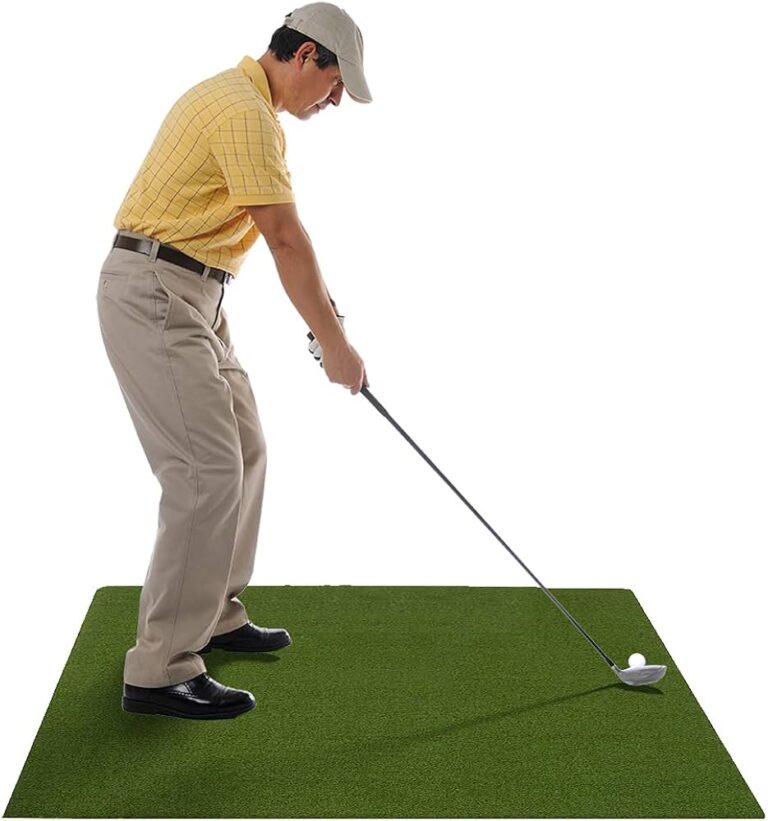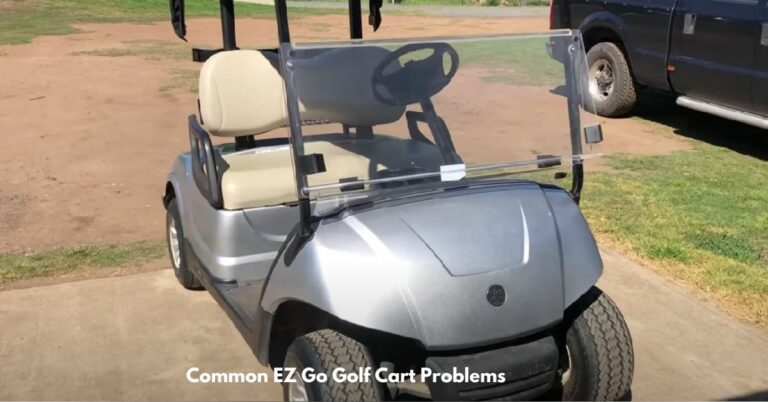Electric Yamaha Golf Cart Troubleshooting an Electric Yamaha Golf Cart typically involves checking the battery, connections, and motor. Address common issues like power loss, starting problems, or unusual noises quickly.
Golf cart owners often face various challenges with their electric Yamaha golf carts. From battery issues to motor malfunctions, staying on top of maintenance can prevent prolonged downtime. Understanding the common problems and how to solve them is crucial for a reliable and smooth operation.
Whether you’re dealing with a cart that won’t start, struggles to maintain power, or emits strange sounds, quick diagnostics can help you identify and rectify the issue. This introductory guide offers insight into the key troubleshooting steps for your electric Yamaha Golf Cart, ensuring you get back on the course with minimal disruption. With simple, clear instructions, even those with basic mechanical knowledge can confidently tackle the fundamentals of golf cart maintenance and repair.

Credit: m.youtube.com
Identifying Your Golf Cart’s Symptoms
Identifying the symptoms of your Electric Yamaha Golf Cart can determine the cause of troubling issues. Unusual noises or a complete silence might signal a range of problems, from worn-out bearings to electrical malfunctions. If you encounter power loss or your cart stops intermittently, it could be due to battery issues or defective solenoids. Furthermore, a cart that fails to start usually points towards either a dead battery, faulty ignition switch, or compromised connections. Regular maintenance can preempt these disruptions, ensuring a smooth ride on the greens. Consulting the manufacturer’s manual or seeking professional assistance often resolves these issues promptly.
Battery Troubleshooting Steps
Troubleshooting a Yamaha electric golf cart often starts with the battery. Ensuring proper connections is crucial; thus, each connection should be firm and free from corrosion. Loose or corroded terminals can cause significant performance issues.
The next step involves measuring the battery’s charge levels. Utilizing a multimeter, verify that the voltage readings correspond to the levels recommended by the manufacturer. Consistently low readings might suggest the need for charging or potential battery replacement.
Lastly, inspect the battery for visible damage such as cracks, leaks, or swelling. Such signs often indicate that the battery is compromised and may require immediate attention to prevent further damage to the electrical system of the cart.
Quick Fix For Power Failures
Quick Fix for Power Failures often stem from issues with either the motor or the controller. A simple yet effective approach for troubleshooting involves resetting these components. To reset, locate the reset button or switch on your electric Yamaha golf cart and press or flip it accordingly. This can often resolve minor glitches causing power disruptions.
Regular cleaning and maintenance are crucial in preventing power failures. Begin by inspecting all terminals and ensure they are free from debris and corrosion. Proper cleaning involves using a solution of baking soda and water to neutralize any acid and a wire brush to clean the terminals. Once they are clean, it is equally important to inspect the tightness of all connections. Loose terminals can lead to intermittent power issues and should be tightened to assure solid electrical continuity.
Diagnosing Acceleration Hiccups
Diagnosing acceleration issues in an electric Yamaha Golf Cart often leads you to the throttle sensor. A faulty throttle sensor can cause irregular or slow acceleration. To test the throttle sensor, use a multimeter to check the sensor’s resistance levels. Consistent readings indicate a working sensor, whereas fluctuating resistance suggests a need for replacement.
Attention to the pedal switch adjustment is also crucial. This switch should engage as soon as the pedal is pressed. To adjust, locate the switch near the pedal and make sure it connects properly. Incorrect alignment can lead to acceleration delays or failures. A simple adjustment can sometimes restore proper function and is often an easy fix for acceleration hiccup issues.
Subheadings: Testing the throttle sensor, Adjusting the pedal switch
| Throttle Sensor Test | Pedal Switch Adjustment |
| Use a multimeter for resistance test. | Check for early engagement upon pressing. |
| Consistent readings = Good sensor. | Align switch for proper connection. |
| Fluctuating readings = Replace sensor. | Adjust as needed for optimal performance. |
Solving Electrical Wiring Problems
Troubleshooting an Electric Yamaha Golf Cart can be straightforward if you know where to look. Locating and repairing loose wires is often the first step in resolving electrical issues. Begin by inspecting all wiring harnesses and connectors. Make sure each connection is secure; a loose wire can lead to intermittent problems or complete system failure. Dividing the task into manageable sections can simplify the process. Check the wires under the seat, behind the dash, and around the battery compartment. These are common areas where wires may become loose or disconnected.
Checking and replacing fuses is another critical step in troubleshooting. Each fuse is responsible for protecting specific electrical components. Use a multimeter to check the continuity of each fuse. A blown fuse will exhibit no continuity and requires replacement. Remember to turn the cart’s power off before attempting to replace any fuses to prevent electric shocks. Fuses with the correct amperage are crucial to ensure the electric system functions correctly and safely.
Motor And Controller Complex Issues
Experiencing an overheating motor in your Electric Yamaha Golf Cart can lead to performance issues. To mitigate this problem, ensure adequate ventilation around the motor to promote cooling. Regular cleaning of vents and checks on the cooling fans are essential. Consider replacing old or worn out parts which can reduce heat efficiency. Implementing a routine maintenance schedule is vital for the longevity of your cart’s motor.
Deciphering controller error codes requires accessing your cart’s manual, as each model has its own set of codes. Common codes include the likes of Code 15: Low Battery Voltage, indicative of battery issues, or Code 88: Motor Controller Output Driver Fault, pointing to potential failures in the motor controller. Understanding these codes is crucial for timely repairs and avoiding further damage to your golf cart.
| Error Code | Meaning |
|---|---|
| 21 | Accelerator Fault |
| 30 | Solenoid Open Circuit |
| 41 | Motor Temperature Sensor Fault |
| 56 | Motor Hall Sensor Fault |
Fine-tuning For Optimal Performance
To ensure your Electric Yamaha Golf Cart operates at peak performance, proper calibration of speed settings is essential. Begin by consulting the owner’s manual, which provides specific instructions on adjustment procedures. Keep in mind that changes in speed settings can affect the cart’s overall efficiency and power usage.
Next, regular maintenance is key to a longer lifespan for your golf cart. Focus on routine checks of the battery terminals to prevent corrosive build-up, which can impair function. Also, the inspection and replacement of worn out parts not only prevent breakdowns but also contribute to a smoother ride. Ensure proper tire inflation, clean air filters, and alignment checks are performed with consistency to avoid unnecessary strain on the cart’s systems.
| Maintenance Task | Frequency |
|---|---|
| Battery Terminal Inspection | Monthly |
| Tire Inflation Check | Bi-weekly |
| Air Filter Cleaning | Every 50 hours of use |
| Alignment Check | Semi-annually |
Attention to these details promotes a well-maintained golf cart that is both reliable and efficient. Proper care will lead to fewer issues and a more enjoyable driving experience on the course.
Frequently Asked Questions Of Electric Yamaha Golf Cart Troubleshooting
Why Won’t My Yamaha Golf Cart Start?
If your Yamaha golf cart won’t start, check the battery connections for any corrosion or loose wires. Also, ensure the battery is adequately charged. If the issue persists, the solenoid or ignition could be at fault.
What Common Electrical Issues Do Yamaha Carts Have?
Common electrical issues in Yamaha golf carts include faulty batteries, corroded terminals, and wiring problems. Solenoid failures and malfunctioning controllers are also prevalent. Regular inspection can prevent these issues.
How To Reset A Yamaha Golf Cart?
To reset a Yamaha golf cart, turn off the key switch, and disconnect the battery. Wait for a few minutes before reconnecting it. This can often recalibrate the system and clear minor electronic glitches.
Can I Troubleshoot The Yamaha Cart Charger Myself?
Yes, you can troubleshoot a Yamaha golf cart charger by checking the power source, ensuring the cord is plugged in properly, and looking at the charger’s condition. Always refer to the manual and consider safety first.
Conclusion
Encountering issues with your Yamaha electric golf cart can be daunting. Rest assured, many problems can be solved with the troubleshooting tips we’ve outlined. Regular maintenance will keep your cart running smoothly. Remember to refer back to this guide whenever your cart shows signs of trouble.
Safe driving on the greens!



